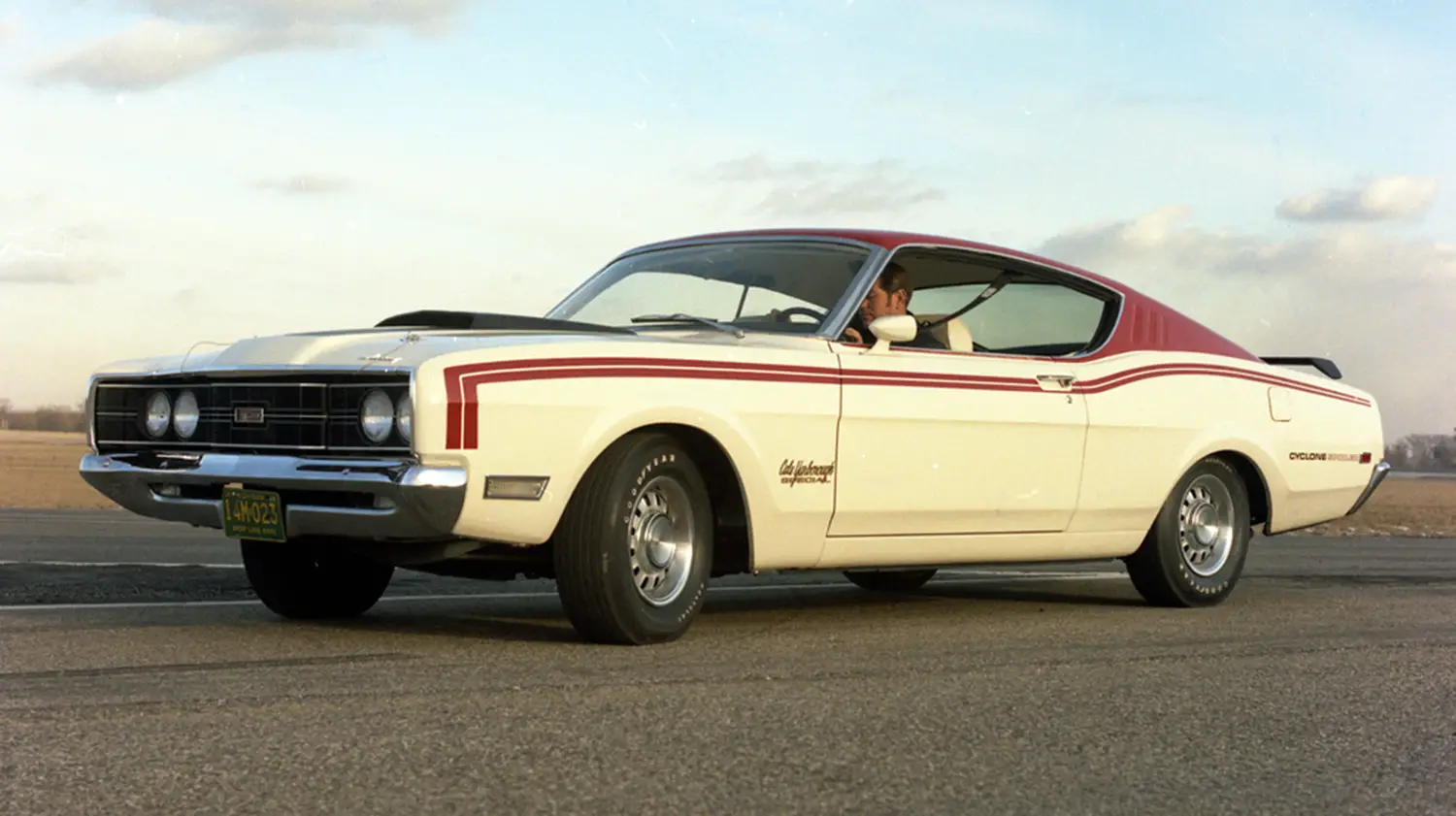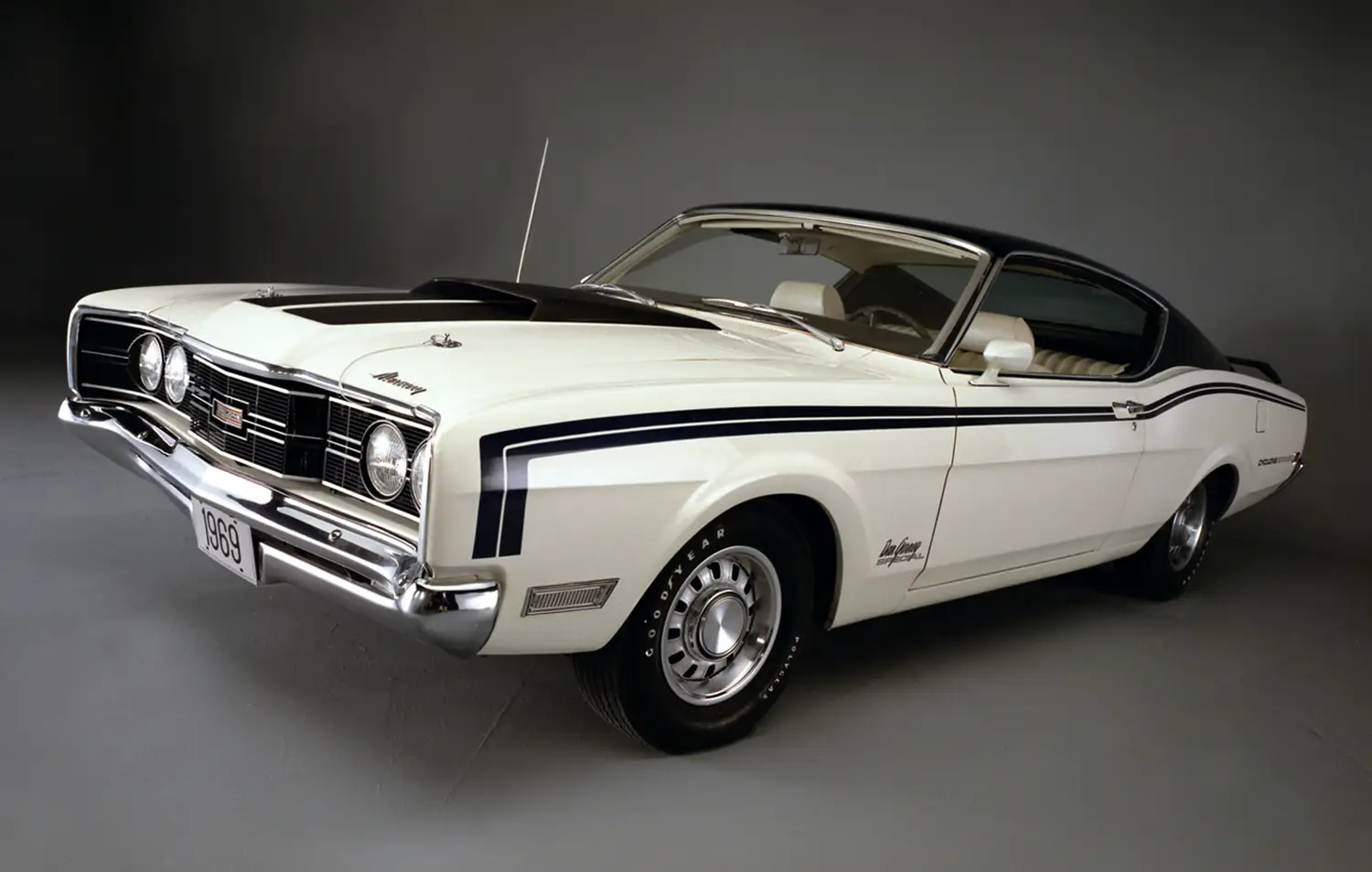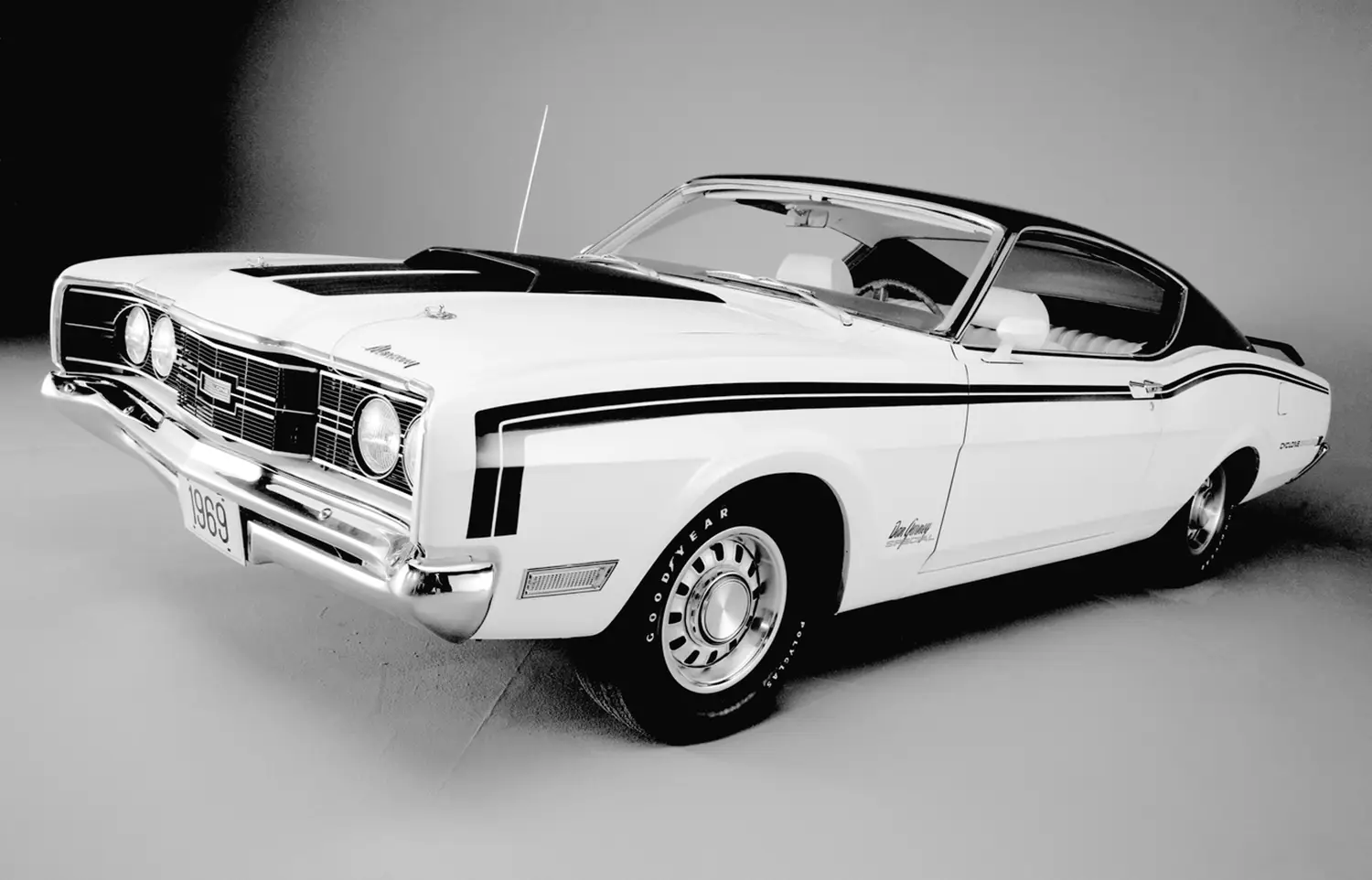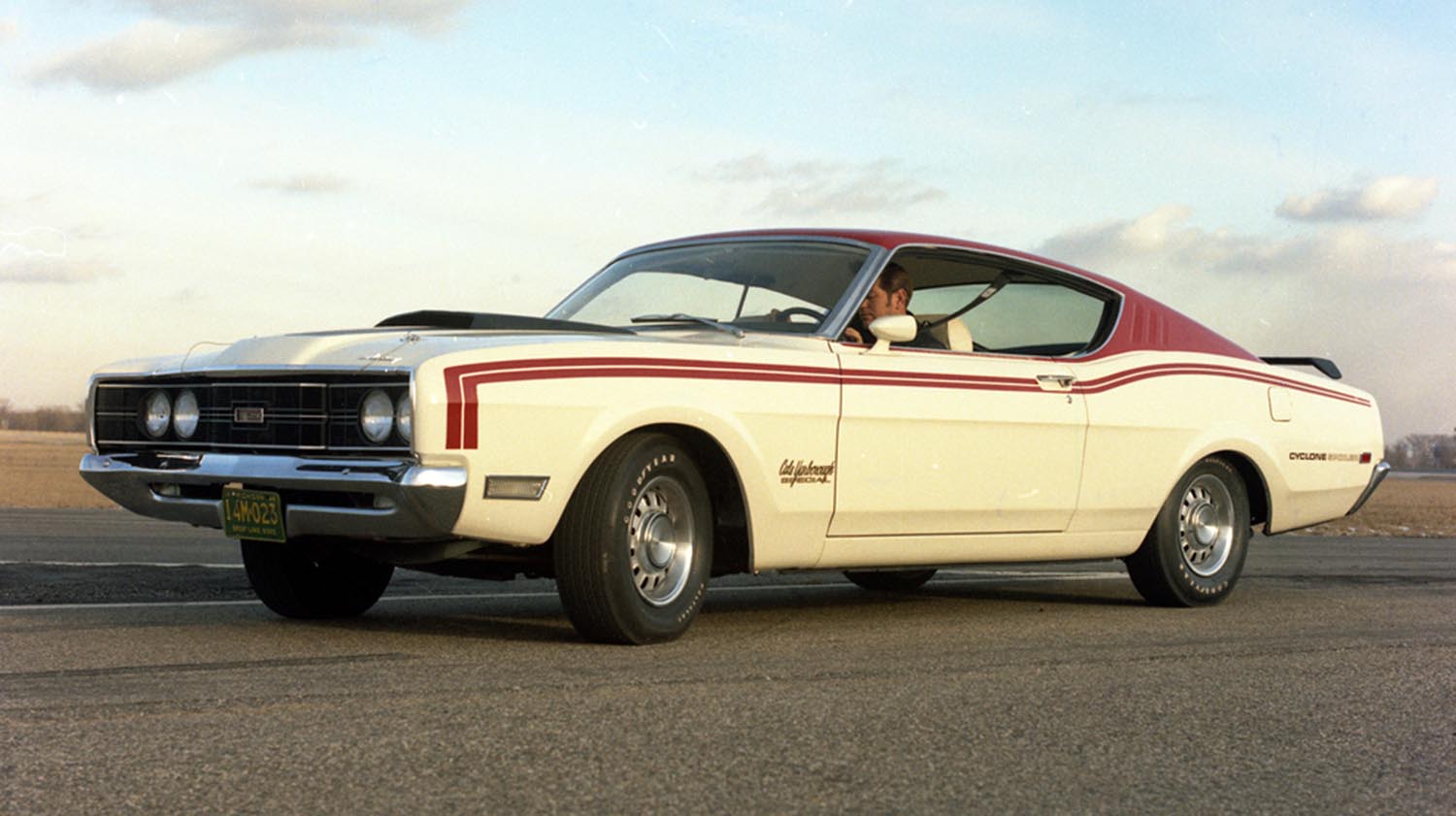
The 1969 Mercury Cyclone Spoiler was not your typical American muscle car. It was a direct response to NASCAR’s growing speed wars, a time when aerodynamics mattered as much as horsepower. Mercury’s engineers set out to create a car that could hold its own against the Ford Torino Talladega and Dodge Charger Daytona, resulting in one of the brand’s most fascinating and rare performance machines.
Designed for NASCAR Glory
The Cyclone Spoiler emerged as part of Mercury’s push to dominate NASCAR’s superspeedway scene. The production car was built for homologation, ensuring that the race-ready version could legally compete. To meet the minimum requirement, Mercury produced just over 500 examples, each tailored to reflect its racing inspiration.
Distinctive two-tone paint schemes celebrated Mercury’s factory racing drivers: the blue and white “Dan Gurney Special” and the red and white “Cale Yarborough Special.” These versions weren’t just cosmetic tributes, they symbolized the close connection between the track and the showroom.
Aerodynamics Meet Muscle
Unlike earlier Cyclones, the Spoiler featured subtle yet effective aerodynamic improvements. The front end was reshaped for reduced drag, and the grille was made flush to improve airflow. While it lacked the extreme nose cone of the later Spoiler II, it carried the same racing DNA and aggressive stance.
Mercury also engineered the car for better high-speed stability, giving it a competitive edge on NASCAR’s long straightaways. Even as a road car, its aerodynamic balance and low-slung design set it apart from the muscle crowd.

Power and Performance
Under the hood, the 1969 Mercury Cyclone Spoiler packed serious muscle. Most versions came equipped with the 428 cubic-inch Cobra Jet V8 engine, producing around 335 horsepower and immense torque. Buyers could also choose smaller but capable 351 or 390 cubic-inch V8s, paired with either a 4-speed manual or 3-speed automatic transmission.
Acceleration was strong, and the car’s wide stance gave it a planted feel at high speeds. Even without the aerodynamic enhancements of the Spoiler II, the standard Spoiler could hold its own on the road and track alike.
Limited Numbers, Lasting Legacy
Production numbers remained low, making the Cyclone Spoiler one of Mercury’s rarest creations. Its combination of racing intent and everyday usability captured a fleeting moment in American performance history, when automakers built road cars purely to go racing. Today, surviving examples are prized for their authenticity and connection to the NASCAR era.
Heritage and Collectibility
The 1969 Mercury Cyclone Spoiler stands as a symbol of Mercury’s ambition during Detroit’s most competitive decade. While Ford, Dodge, and Plymouth often dominate muscle car conversations, the Spoiler carved its own niche. It bridged the gap between street performance and professional motorsport, blending style, power, and aerodynamic experimentation in equal measure.
Summary
In many ways, the 1969 Mercury Cyclone Spoiler represents the boldest expression of Mercury’s racing spirit. It was born from competition, built for speed, and remembered as an aero-warrior that briefly made Mercury a serious contender on the NASCAR stage. More than fifty years later, it remains a cherished icon of the muscle car era, distinctive, purposeful, and undeniably cool.
Disclaimer: Content on this site is for informational purposes only. Vehicle specs, pricing, and availability may change. Always verify details with official sources before making decisions. Opinions are those of the authors.
Source: Ford Heritage Vault

